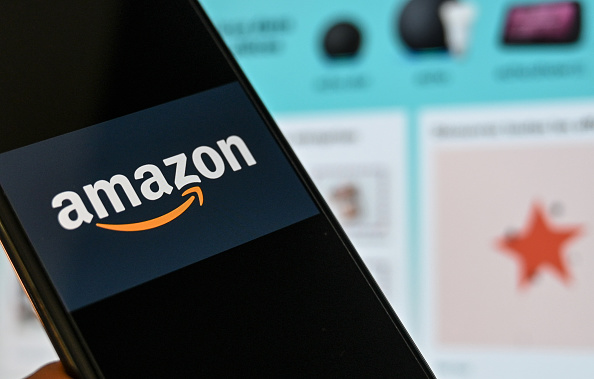Smart companies recognise that small gestures of goodwill to both customers and staff can make a big difference in establishing and maintaining healthy and positive business relationships.
Internal recognition and reward are powerful ways to improve productivity, while extending that goodwill externally – within the boundaries of your own corporate social responsibility policies, of course – is a proven tool for successful customer and client retention.
Have you ever thought how much it actually costs to find new clients? Statistics and research from the UK Chartered Institute of Marketing says that it can cost between four and ten times more to acquire a new client than it does to retain an existing one – and in some cases, it is over 30 times more.
Repeat clients spend on average 67 per cent more and it’s very likely that 20 per cent of your clients bring you 80 per cent of your revenue (the old 80/20 rule still holds true for many businesses). While according to Bain & Company a 5 per cent increase in retention yields profit increases of between 25 per cent and 95 per cent.
Clare Underwood is the founder of hamper experts, Under Fine Wraps, a Rutland-based company that works with small and large employers to develop reward and gift programmes. We spoke to her to find the six key rules she uses when assessing and implementing corporate gifting strategies.
Rule 1 – Stick to a budget
Corporate gifting should be seen as an investment by your company, so it is worth allocating and sticking to a budget, just like any other business investment.
There are likely to be flashpoints such as Christmas and Valentine’s Day, so building a properly phased budget ensures funds don’t run out, especially at year end and leaving your business without the means to thank valuable customers or staff!
Rule 2 – Send the right message
Gifts are meant to show gratitude for the personal relationship you have with the customer, not for the value of the business they do with you. If you send a gift that’s too expensive or valuable, it can imply that you’re trying to buy the customer’s business.
When it comes to showing gratitude for that personal relationship, don’t overdo it! There is a fine line between a thank you and a bribe and the wrong gift at the wrong time could cause unwanted scrutiny.
Rule 3 – Be thoughtful with your choice of gift!
It always good to put some thought into what to give your customers rather than just gifting for the sake of it. Knowing what they like or dislike, especially when it comes to food and drink hampers and gifts, will show the customer that you really care.
Consider logging your customer’s key preferences on your company’s CRM system when chatting to them. Or make your own notes, preferably on paper rather than mentally! When it comes to gifting time, be it, the completion of a project, a special event or as a thank you, it will really help to know if they prefer tea to coffee, red to white wine, chocolates to a cheeseboard.
Other successful branded gifts to give customers are those which they will find useful, makes their life easier, or solves a problem.
Most of us have been the recipient of thank you gifts now gathering dust in a store room or even worse, consigned to the nearest waste bin. So, as a business, if you want to build on your customer’s relationship with your company, be creative and thoughtful. Show you really care.
Rule 4 – Add a personal message
It’s amazing how powerful the truly personal touch can be. Alongside the gift you give we advise that you add a personal message or note, handwritten if possible. You may wish to explain to the customer why you selected the gift and why you thought they would appreciate it.
This shows them the special care and attention you took in selecting the gift and in a world dominated by short and electronic communication, the pen really can be mighty.
Hand delivering gifts, if feasible, is also a nice personal touch. Both these small touches show the customer how much effort and care you’ve put into it. And, ultimately, people want to do business with companies they trust and who care about them.
Rule 5 – Pick the right moment
Depending on your budget or as mentioned earlier, the level of investment in your customer loyalty programme, gifting can be most effective when the customer is least expecting it. And some of the very best gifts are the ones unlike anything else your customer receives. For some companies, the major gift-giving season is at Christmas. However, gifting doesn’t always have to come at the end of the year.
Major gift-giving in the New Year or on Valentines Day will help your gifts really stand out from the rest. Throughout the year, customers may reach milestones, trigger special events or occasions, so acknowledging these in a timely manner when the customer is least expecting it will show some thought, care and thanks.
Additionally, gifting for new clients demonstrates that you’re a business that starts as it means to go on, by building lasting relationships with your very latest customers. And, if one of your customers has referred a new customer to you, then an unexpected Referral Gift can be a great way to show your thanks and appreciation.
Rule 6 – Be responsible
These days, it’s essential that businesses have corporate-gifting policies that address both giving and receiving. And before you take the plunge, it’s always best to check your customers’ company policies on corporate gifting too.
The giving of gifts may be acceptable at your own company; however, it could be perceived as commercially inappropriate for the receiving company to accept gifts. However well-intended and innocent, corporate gifting is always designed to have some sort of positive influence – otherwise, what’s the point of doing it?
But it doesn’t mean they’re bribes and it remains a simple and inexpensive way to building lasting relationships with valued clients, customers and staff.





